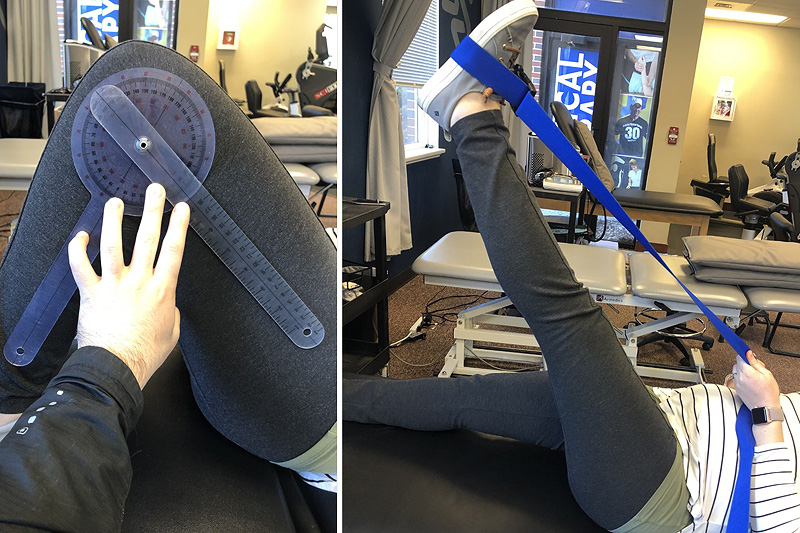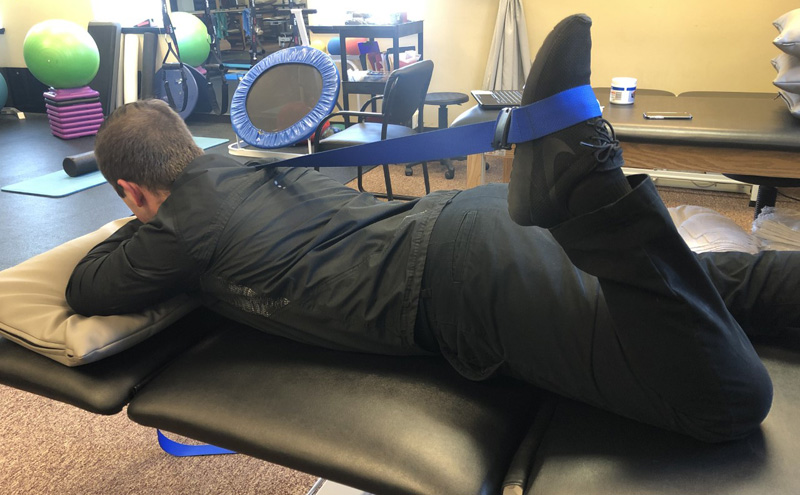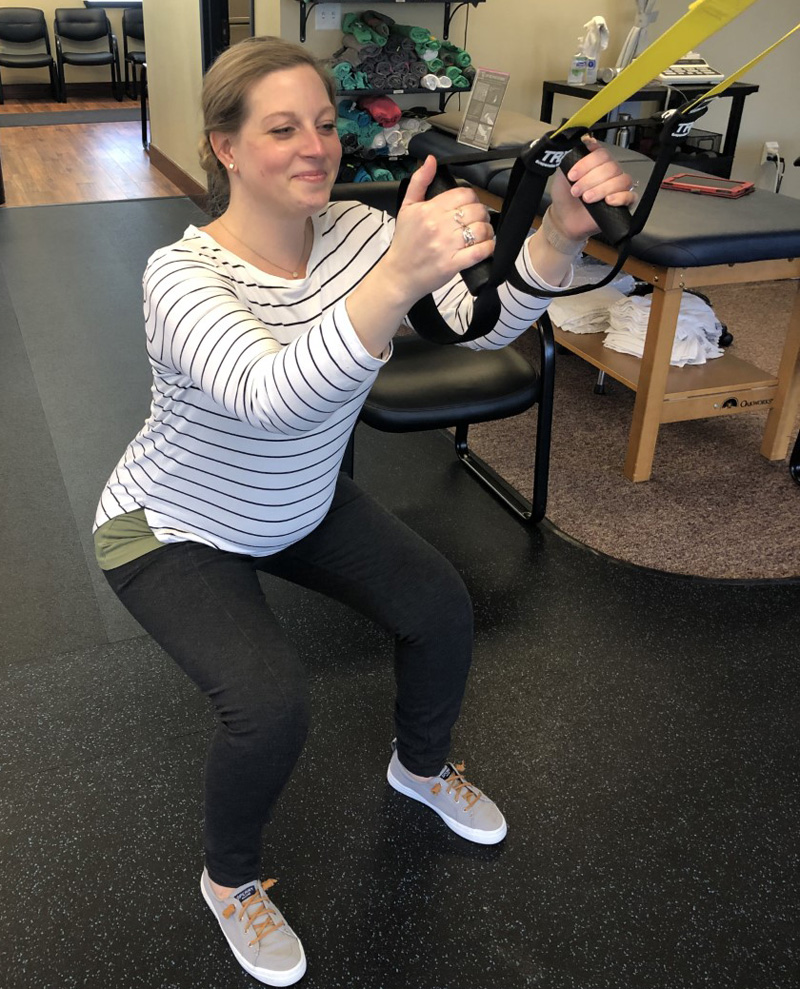 by KRISTIN KEAFER DPT, Hampton Physical Therapy
by KRISTIN KEAFER DPT, Hampton Physical Therapy
Osteoarthritis is a degenerative process over time where the cartilage at the ends of your bones starts to “wear and tear”. Many different joints throughout your body may be affected with age related changes and the knee joint is commonly a symptomatic area. This involves the break down of cartilage at the end of the femur (thigh bone) and the end of the tibia (shin bone). Typically, an x-ray and a severe decline of your daily function will determine if you are in need of a joint replacement surgery. In the United States alone, 4.7 million individuals (3.0 million women and 1.7 million men) were with a total knee replacement in 2010.2 Signs that you may be ready for a knee replacement are significant swelling around the knee, tenderness, stiffness, pain with inability to straighten knee, deformities such as knock- knee or bow legged, and severe functional limitations. Physical therapy is the first line of defense to address pain and function, however if conservative methods are not working, it may be time for a joint replacement. All non-surgical treatments will be exhausted before moving forward with a surgical intervention. This can be discussed with both your physical therapist and your doctor.
What is a knee replacement?
The worn cartilage at the ends of the bones are surgically removed and replaced with a combination of metal and plastic implants. Typically, a knee replacement will last up to 20 years, however this can vary based on wear and tear of the components placed. In some cases, the doctor will only replace one side of the joint called a uni-compartmental replacement because the other side of the joint is still healthy. In these cases, the surgery is quicker, hospital stay is shorter, and rehabilitation process is faster.
Pre-Operative Treatment

Usually, your surgeon will refer you to physical therapy for pre-operative treatment prior to your knee replacement. Research indicates that it can improve early post-operative pain and function.1 A physical therapist will evaluate your range of motion at your knee, your strength, and your overall function with daily activities. This will further justify need for the surgery to your insurance company and will allow the therapist to work with you to increase strength and range of motion as much as possible to improve your post-operative outcome.
Pre-operative treatment is unique in the fact that you can meet with your therapist prior to undergoing your surgery to ask any additional questions and learn more about the rehabilitation part of this journey. Many of the range of motion and strength exercises that are prescribed to you before surgery will be similar to those after surgery. This always helps to make you feel more comfortable with what to expect.
Post- Operative Treatment
After surgery, typically you will spend 1-2 days in the hospital. You will work with a physical therapist in the hospital who will help you out of bed and start moving. They will show you how to use a walker or crutches and they will give you some exercises to work on while you are in bed. It is important to move after surgery to avoid a DVT (blood clot). Your plan for discharge depends on how functionally limited you are and what your home situation is like. Sometimes you will be discharged directly to home, and other times you may go to a skilled nursing facility if you need more help after surgery. Once at home, a physical therapist will come to your home to help you. As soon as you are able to safely leave your home, you will transition to outpatient physical therapy for continued rehab.
Outpatient rehab… this is where Hampton Physical Therapists’ are essential in this process!

You should expect your therapist to be working hands on to reduce swelling and pain in the early stages. We also help to properly transition you off of a walker, crutches, and/or a cane to return you to normal walking mechanics. Manual stretching is implemented to improve your range of motion into flexion (bending the knee) and extension (straightening the knee). You will be given exercises to work on in the clinic and at home. It is imperative that you work as a team with your therapist to reach the best outcome. Gradually the focus will transition from range of motion exercises to strengthening exercises to improve all of your functional activities.
 Below are guidelines for reaching functional goals post operatively to get you back to living a normal life!
Below are guidelines for reaching functional goals post operatively to get you back to living a normal life!
Reaching Your Goals!
Day 1- 2 weeks
0 degrees of extension and 65-90 degrees of knee flexion. You will be able to stand, walk, go up and down stairs with assistance. Decrease swelling and keep pain under control!
2- 6 weeks
0 degrees of extension and greater than 90 degrees of flexion. You will be able to walk without an assistive device, sit and stand more comfortably, and do stairs with minimal support.
6-12 weeks
0 degrees of extension and 115 degrees of flexion or better. You should be able to move around normally, bend down to pick things up, sit comfortably, stand for longer periods, and tie your shoe laces.
12+ weeks
0 degrees of extension and 115-135 degrees of flexion. The first 90 days are definitive in your recovery. You should have little pain and be able to do most daily activities with ease. You will be working towards walking longer distances and getting back to normal life.
Range of Motion Milestones
0 degrees of extension to walk normal without a limp
65 degrees of flexion to walk on even surfaces
70 degrees of flexion to lift an object from the floor
85 degrees of flexion to climb stairs
95 degrees of flexion to sit comfortably and to stand up from being seated
105 degrees of flexion to tie shoe laces comfortably
115 degrees of flexion to squat or sit cross legged comfortably
135 degrees of flexion to get into and out of a bath tub without limitation
Hampton Physical Therapy is here to help with your journey before and after joint replacement surgery! Please contact us at either our Hampton or Seabrook office with any additional questions or to schedule a FREE discovery visit!
Resources
-
- Li Wang, et al. Does preoperative rehabilitation for patients planning to undergo joint replacement surgery improve outcomes? A systematic review and meta-analysis of randomised controlled trials. BMJ Open. 2016; 6(2): e009857. Published online 2016 Feb 2. doi: 1136/bmjopen-2015-009857
- Maradit Kremers H, et al. Prevalence of Total Hip and Knee Replacement in the United States. J Bone Joint Surg Am.2015 Sep 2;97(17):1386-97. doi: 10.2106/JBJS.N.01141.
- Rowe PJ, et al. Knee joint kinematics in gait and other functional activities measured using flexible electrogoniometry: how much knee motion is sufficient for normal daily life? Gait Posture.2000 Oct;12(2):143-55.






